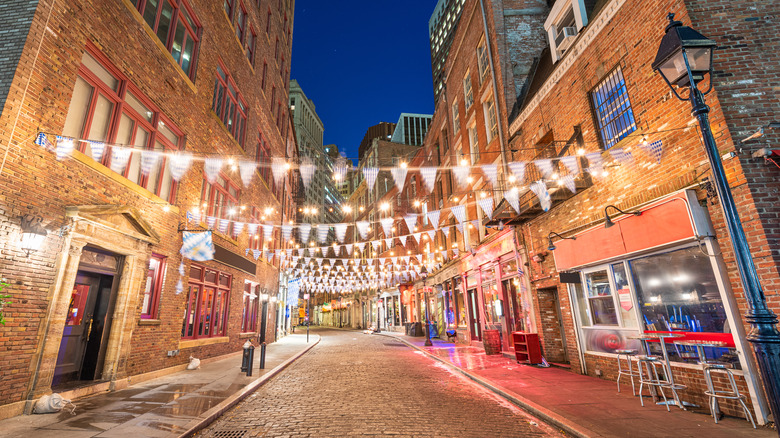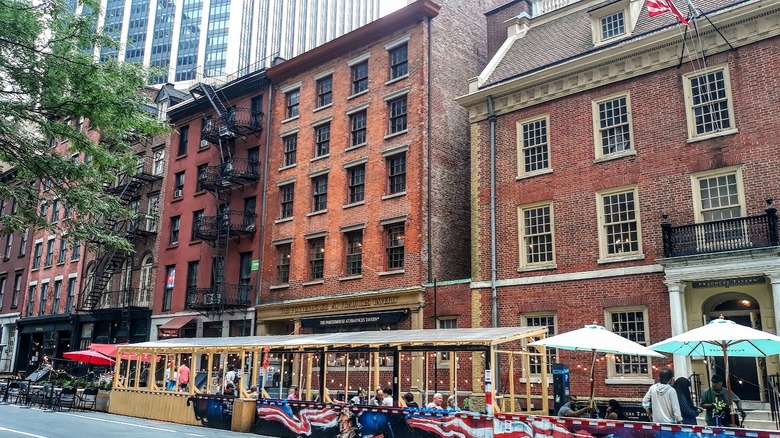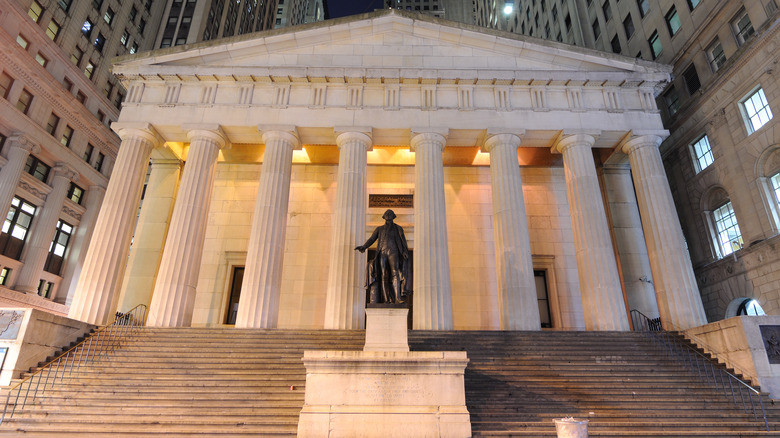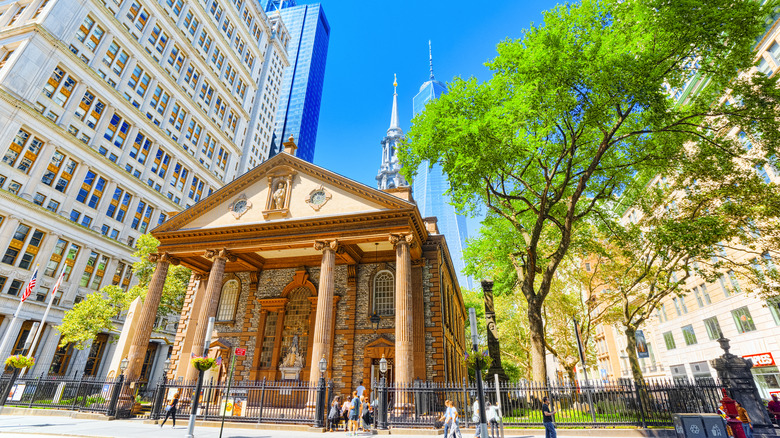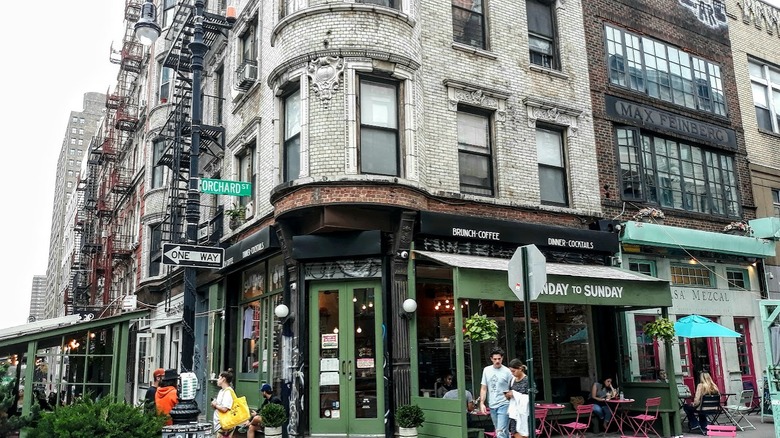The 5 Best Destinations History Buffs Will Love In The Oldest Part Of New York City
When looking at the huge screens on buildings in Times Square or the countless modern skyscrapers in the skyline, it can be easy to forget that New York City is one of the best U.S. cities for history buffs. The city long predates the American Revolutionary War and its early prominence helped make it the initial the capital of the U.S. in the late 1700s. Of course, Washington, D.C. became the capital in 1790, but New York City continued to be one of the most important cities in the country.
Remnants of these formative centuries are alive and well in lower Manhattan, which is the oldest part of New York City. Despite clashes with indigenous tribes, Dutch settlers created New Amsterdam here in 1624 and Stone Street became its first paved road in 1658. While the Great Fire of New York in 1835 destroyed some structures, the modern-day Stone Street has plenty of reconstructed old brick buildings similar to those of Europe, yet the area still feels uniquely New York City. Wander along this cobblestone street and the intersecting Broad Street to find restaurants and bars in these old buildings. Look for plaques too, like the one marking the year the first printing press arrived in the city, in 1693.
Walk in George Washington's footsteps around Fraunces Tavern
In 1664, the British took control over the Dutch settlement and renamed it New York. The city had a significant role in the American Revolutionary War, with British troops stationed there from 1776 until the war ended in 1783. George Washington and his army celebrated the end of British occupation and the war itself throughout the city. The end of his festivities was at Fraunces Tavern, a meeting place for Washington throughout the war. He gave a farewell address to his army at this tavern before heading home.
Fraunces Tavern still stands and is one the oldest structures in the entire city after opening its doors in 1762. With multiple stories and bars, you can choose from a lengthy list of food and drink options while you dine right where Washington once did. Check out the Fraunces Tavern Museum in the same building for more information on the first president's time at the tavern and the Revolutionary War as a whole.
Step inside an early United States government building
From Fraunces Tavern, head north on Broad Street through the Financial District. To really take in the massive buildings in this part of town, skip the New York City subway system and just travel on foot. Right by the New York Stock Exchange building is Federal Hall. Not only was Federal Hall the site of George Washington's presidential inauguration in 1789, but it was also the building in which James Madison wrote the Bill of Rights that same year. All three branches of the United States government first congregated in Federal Hall before Washington, D.C. became the new capital.
Federal Hall is hard to miss thanks to the huge statue of Washington on the front steps. The building itself now serves as a museum for this important era of U.S. history. Go inside (at no cost) to see the bible that Washington used when he took his oath of office, portraits of the Founding Fathers, an old printing press, and more.
Visit a chapel that has stood the test of time
Continue your Revolutionary War sightseeing at St. Paul's Chapel. A church has been here since 1766 when Queen Anne of Great Britain designated the land for a branch of the larger Trinity Church further north in Manhattan. Ironically, a monument to fallen Revolutionary War fighter General Richard Montgomery was placed here just 10 years later. Like Fraunces Tavern, George Washington frequented this chapel. He even visited just hours after getting sworn in as the first president of the United States.
St. Paul's Chapel survived the Great Fire of 1776 and despite being less than one quarter of a mile from the Twin Towers, St. Paul's Chapel emerged from the 9/11 terrorist attacks unscathed. Today, you can see the exact pew where Washington once sat to worship, the Montgomery Monument, and see tributes to both victims of 9/11 and rescue volunteers who rested in the chapel after their long hours of relief work. Cross the street from the chapel's entrance to see the modern One World Trade Center stand tall behind the chapel. This gives an amazing perspective on New York City's centuries of resilience.
Learn about the lives of 19th century immigrants in NYC
Meander further north to keep following the timeline of lower Manhattan. Around Canal Street is Little Italy and Chinatown. While both regions reflect the large swaths of Italian and Chinese immigrants who have long called New York City home, immigrants of countless backgrounds began their new lives on American soil throughout these parts of the city. Many of the buildings here are tenement apartments dating back to the mid 1800s. Immigrants arriving during this era often lived in these housing units characterized by colored brick exteriors, fire escapes and narrow widths. Hester, Mulberry, Orchard, and Mott are just some of the many streets that have these buildings in spades.
One of the museums you'll want to visit in New York City is the Tenement Museum. This particular tenement block shows museum visitors what typical homes and ground floor businesses would have looked like during the 1800s. The Tenement Museum also keeps the stories of its past residents alive. Check online to pick which real immigrant families you would like to hear more about on your tour. The idea of the American Dream is incredibly vivid as you imagine life for those who made New York City into the culturally diverse place that it is today.
